Q
Does RS6 have massage seats?
As a high-performance station wagon, the configuration of the Audi RS6 varies according to different markets and vehicle models. In the Malaysian market, some high-end versions of the RS6 may offer the front-seat massage function as an optional extra. This function is usually included in the premium seat option package or luxury kit, which can provide multiple massage modes for the driver and front-seat passengers to relax. However, whether it is a standard feature or not depends on the latest configuration list of local Audi dealers in Malaysia.
For Malaysian consumers who value comfort, apart from the massage seats, the RS6 is also equipped with sports seats, heating and ventilation functions, and high-end leather materials. These configurations can enhance comfort during long-distance drives or daily commutes. It's worth noting that high-performance vehicles usually focus more on the driving experience. Therefore, even without the massage seats, the seat design of the RS6 can provide excellent lateral support during aggressive driving.
It is recommended that interested car owners directly consult local authorized Audi dealers to obtain the most accurate configuration information and test-drive opportunities to personally experience the performance and comfort of this vehicle.
Special Disclaimer: This content is published by users and does not represent the views or position of PCauto.
Related Q&A
Q
Is the Audi RS6 manual or automatic?
Currently, all models of the Audi RS6 come standard with an 8 - speed Tiptronic automatic transmission, and there is no manual transmission option. The combination of the 4.0-liter V8 twin-turbocharged engine and the automatic transmission in this high-performance station wagon can deliver 600 horsepower. It only takes 3.6 seconds to accelerate from 0 to 100 km/h. The automatic transmission has an extremely fast shifting speed and can withstand a huge amount of torque, which is very suitable for the congested urban traffic in Malaysia as well as the needs of high-speed cruising. In fact, most high-performance vehicles nowadays use automatic or dual-clutch transmissions because the computer-controlled shifting is more accurate and faster than manual operation. For models like the RS6 that emphasize both daily practicality and ultimate performance, the automatic transmission can balance comfort and sporty performance. The hot and rainy climate in Malaysia also makes the stable characteristics of the automatic transmission more favorable. If you want to experience the fun of manual shifting, you can consider some models in the Audi S series or entry-level performance cars. However, as the flagship station wagon, the automatic transmission is indeed the most reasonable choice for the RS6.
Q
What is the comfort mode on the Audi RS6?
The Comfort Mode of the Audi RS6 is a preset option in the driving mode selection system. It's mainly optimized for daily driving scenarios. By adjusting parameters such as suspension damping, steering assist, transmission shifting logic, and throttle response, it offers a smoother driving and riding experience. In the common urban congested traffic conditions in Malaysia or during long-distance drives, this mode can effectively reduce the firmness of the chassis, absorb road bumps, and at the same time reduce the aggressive feedback from the engine and exhaust system. It's suitable for family trips or situations where you need a relaxing drive.
To expand a bit, the driving modes of the RS6 usually also include Dynamic Mode, Auto Mode, and Individual Mode. The Dynamic Mode enhances the performance, while the Comfort Mode focuses more on fuel economy and quietness. For Malaysian users, the Comfort Mode is particularly useful in hot weather and mixed road conditions. It allows you to enjoy the high-performance essence of the RS6 while also taking into account daily practicality, such as a gentle air-conditioning start and a more linear power output.
It should be noted that there may be slight differences in the mode tuning of RS6 models from different years, but the core logic always revolves around balancing performance and comfort.
Q
What is the top speed of the Audi RS6?
As a high-performance station wagon, the officially announced top speed of the Audi RS6 is 280 km/h. If you opt for the Dynamic Plus package, it can be increased to 305 km/h. This is thanks to its 4.0-liter V8 twin-turbocharged engine, which can output 600 horsepower and 800 Nm of torque. Paired with an 8-speed Tiptronic transmission and the quattro all-wheel-drive system, this car can still demonstrate excellent stability and acceleration performance under the tropical climate and changeable road conditions in Malaysia. For Malaysian car enthusiasts, the RS6 not only offers the practical space of a station wagon but also has the performance of a supercar, making it very suitable for players who pursue both speed and practicality. It's worth mentioning that although the RS6 has a very high top speed, traffic rules still need to be followed on Malaysian roads. After all, safe driving is the most important thing. In addition, the chassis tuning and aerodynamic design of the RS6 have also been specially optimized, allowing it to maintain excellent handling even at high speeds, enabling drivers to experience Audi's profound technical accumulation in the field of performance cars.
Q
Does the RS6 have 4 wheel steering?
Yes, the Audi RS6 Avant is indeed equipped with a four-wheel steering system (4 Wheel Steering). This technology can enhance the vehicle's stability when cornering at high speeds. Meanwhile, it can reduce the turning radius when driving at low speeds, making the driving more flexible. It's particularly suitable for the narrow roads in Malaysian cities or winding mountain roads. The four-wheel steering system allows the rear wheels to turn in coordination with the front wheels. At high speeds, the rear wheels turn in the same direction as the front wheels to increase stability, while at low speeds, the rear wheels turn in the opposite direction to improve flexibility. In addition to the RS6, high-performance or luxury models like the Porsche 911 and BMW 7 Series also adopt similar technologies. And this configuration is becoming more and more common in high-performance models in the Malaysian market. Especially for car owners who pursue driving pleasure and practicality, four-wheel steering can significantly enhance the performance in daily driving and intense maneuvers. If you're considering buying the RS6 or other high-performance cars, you can take a test drive to experience the actual effect of four-wheel steering and feel its advantages on different road conditions.
Q
What is the difference between RS6 and RS6 performance?
The main differences between the Audi RS6 and the RS6 Performance lie in power tuning and performance. The RS6 is equipped with a 4.0-liter V8 twin-turbocharged engine, delivering 600 horsepower and 800 Nm of torque. In contrast, the RS6 Performance boosts the power to 630 horsepower and 850 Nm of torque. At the same time, it optimizes the turbo response and exhaust system, shortening the 0 - 100 km/h acceleration time to 3.4 seconds (3.6 seconds for the regular version). Additionally, the Performance version comes standard with a sports differential and a more aggressive chassis tuning, paired with 22-inch wheels and high-performance tires, offering more precise handling.
For Malaysian car enthusiasts, both models are suitable for local road conditions. However, the Performance version is more suitable for those who pursue a track-like driving experience. Moreover, both models require attention to the heat dissipation management of the turbo engine in high-temperature environments. It's worth mentioning that the Audi RS series are fully imported performance cars in Malaysia. They are relatively expensive but have a stable resale value. When purchasing, you can compare the maintenance packages offered by local authorized dealers. These high-performance station wagons combine practicality with brute force, and are the so - called "ultimate grocery - getting cars" in the hearts of many car enthusiasts.
Q
Does the Audi RS6 have air suspension?
The Audi RS6 is indeed equipped with an advanced air suspension system (Audi Air Suspension). This system can provide a more flexible driving experience on Malaysian roads. By adaptively adjusting the stiffness of the shock absorbers and the height of the vehicle body, it combines both sport performance and comfort. In the dynamic driving mode, the suspension lowers the vehicle body to enhance stability, while when encountering rough roads, it can raise the chassis to improve passability, making it highly suitable for Malaysia's diverse road conditions.
It's worth noting that the air suspension is more costly compared to traditional steel springs, but it can significantly enhance the sense of luxury and adaptability. Similar configurations are also available in performance cars of the same class, such as the Mercedes - AMG E63 or the BMW M5.
For Malaysian car owners who are keen on modifications, it is recommended to regularly check the suspension air pump and seals. The tropical climate may accelerate the aging of rubber components. During the original - factory maintenance, potential problems can be identified in advance through ODB diagnosis.
Q
Does the RS6 have dual clutch?
The Audi RS6 doesn't come with a dual-clutch transmission. Instead, it's equipped with an 8-speed Tiptronic automatic transmission. This transmission is well-known for its smooth gear-shifting experience and excellent durability, which is especially suitable for high-performance wagons like the RS6, meeting the needs of both daily comfort and intense driving. For car enthusiasts in Malaysia, the powertrain combination of the RS6 performs stably in the tropical climate. Coupled with the quattro permanent all-wheel-drive system, it can easily handle the local rainy weather and complex road conditions.
It's worth mentioning that although dual-clutch transmissions (such as the S tronic used in the early Audi S/RS series) offer faster gear shifts, the Tiptronic has more advantages in handling high torque and long-term reliability, which is why the RS6 chooses it. If you're interested in the transmission technology of performance cars, you can pay attention to other models under the Volkswagen Group, such as the Porsche PDK or the Lamborghini ISR. They demonstrate the application characteristics of different transmission technologies in the high-performance field.
Q
Is the RS6 turbocharged?
Yes, the Audi RS6 is equipped with a turbocharged engine. Specifically, it uses a 4.0-liter V8 twin-turbocharged engine that can deliver powerful power and torque. This is also a typical configuration for Audi's high-performance models. In Malaysia, this car is favored by many car enthusiasts for its excellent performance and practicality, especially as it can provide a sports car-like driving experience while also being suitable for family use. Turbocharging technology improves the engine's intake efficiency by compressing air, thereby enhancing power output. The twin-turbo design further reduces turbo lag, making acceleration more linear and rapid. In addition to the RS6, turbocharging technology is also widely used in many high-performance cars and ordinary family cars, such as BMW's M series and Mercedes-Benz's AMG series. This technology not only boosts power but also optimizes fuel economy, which is very suitable for Malaysia's road conditions and driving needs. If you're interested in turbocharged cars, you can also learn about the tuning styles of different brands. For example, German cars focus more on the smoothness of power output, while some Japanese models may have an edge in response speed.
Q
Is the Audi RS6 petrol or diesel?
The Audi RS6 is a high-performance station wagon. Currently, all the versions available in the Malaysian market are equipped with gasoline engines. Specifically, it features a 4.0-liter V8 twin-turbocharged gasoline engine paired with a 48V mild-hybrid system, capable of delivering a powerful output of up to 600 horsepower. This engine is renowned for its outstanding performance and rapid response, making it an ideal choice for car owners who seek driving pleasure. Although Audi offers diesel options in other models, the RS6, as a performance-oriented vehicle, doesn't come in a diesel version, which aligns with its positioning that emphasizes sporty tuning and instant power output.
For Malaysian consumers, the gasoline-powered RS6 can not only meet daily driving needs but also showcase excellent acceleration performance on the highway. Meanwhile, Audi's Quattro all-wheel-drive system can adapt to the diverse local road conditions. It's worth noting that high-performance cars in Malaysia typically use gasoline as fuel, which is related to the local market preference and the stability of gasoline quality. Although fuel economy isn't the main selling point of the RS6, it still has a certain competitiveness among performance cars in the same class.
Q
Does the RS6 come in manual?
As a high-performance station wagon, the Audi RS6 currently doesn't offer a Manual Transmission version in the global market. The entire lineup is equipped with an 8-speed Tiptronic automatic transmission. This design better suits its positioning in terms of high performance and daily practicality. Especially in city road conditions like those in Malaysia, the automatic transmission can provide a smoother driving experience. Although the manual transmission has unique advantages in terms of driving pleasure, considering the power output of the RS6 (such as the latest 600-horsepower V8 twin-turbo engine) and the complexity of the four-wheel drive system, the automatic transmission can handle power distribution and shifting efficiency better. Malaysian car enthusiasts who prefer manual transmissions can focus on other performance models like the Honda Civic Type R or the Ford Focus RS, as these models still retain the manual option. In recent years, Audi has gradually phased out the manual transmission in its RS series, mainly to adapt to market demands and technological development trends. However, this doesn't affect the charm of the RS6 as an all-round high-performance vehicle. Its excellent acceleration performance and practicality are still highly favored by car enthusiasts around the world.
Popular Cars
Model Year
Car Compare
Car Photo
Latest Q&A
Q
What does engine capacity refer to?
Engine Capacity refers to the total volume of all cylinders inside the engine, usually expressed in cubic centimeters (cc) or liters (L), such as 1.5L or 1500cc, It directly reflects the total amount of air and fuel mixture that the engine can inhale and compress in a complete cycle. A larger engine capacity usually means higher power output because more fuel and air participate in combustion, producing stronger explosive force to push the piston. However, engine capacity is not the only factor determining performance. Turbocharging, fuel injection technology, etc. can also allow small displacement engines to perform close to or even better than large displacement engines. In addition, engine capacity also affects fuel consumption and road taxes. Although large displacement engines have abundant power, their fuel consumption is relatively high, and they may need to pay higher annual road taxes, while small displacement engines are more economical and suitable for daily commuting. When choosing a vehicle, You can balance the relationship between engine capacity and fuel economy according to your driving needs.
Q
How do I find engine capacity?
To find your vehicle's engine capacity, the easiest ways are to check the owner's manual or the engine bay sticker – you'll usually see it clearly marked as something like 1.5L or 2.0T. Another option is to look at your vehicle registration card (Geran) or check the JPJ website for detailed specs, where the engine size will be listed.
Engine capacity is measured in liters (L) or cubic centimeters (cc), with 1.0L equaling 1000cc. It tells you the total volume of all cylinders and gives a rough idea of power and fuel efficiency. Generally, bigger engines deliver more power but may drink more fuel.
That said, performance isn't just about size – tech like turbocharging and fuel injection also plays a big role. If you're mainly commuting, a smaller engine could be the smarter pick, while drivers who want more punch might prefer a larger or turbocharged setup.
Still unsure? Your best bet is to call an authorized service center for the exact specs.
Q
How many cc is a 1.2 litre engine?
A 1.2L engine has a displacement of 1,200cc—since one liter equals 1,000 cubic centimeters (cc), simple math does the trick. Engine displacement measures the total swept volume of all cylinders, serving as a key indicator of power output. Generally, bigger displacement means more muscle, though at the cost of higher fuel consumption.
In our market, 1.2L engines are commonly found in budget-friendly compact cars, striking a solid balance between fuel efficiency and adequate pep for city driving. But here’s the catch: While displacement matters, real-world performance hinges on engineering tricks like turbocharging or direct injection—tech that can squeeze extra power from small engines while keeping thirst for fuel in check.
If fuel economy tops your checklist, a 1.2L powertrain deserves a look—just don’t skip the test drive. Numbers tell part of the story; how it *feels* on the road tells the rest.
Q
How many cc is a V8 engine?
The displacement (cc) of a V8 engine isn't a fixed number—it varies based on the vehicle model and manufacturer's design. Typically, you'll find them ranging between 4.0L and 6.2L, which translates to roughly 4000cc to 6200cc. Classic American muscle cars, for example, often pack a 6.2L (6200cc) V8, while some high-performance sports cars or luxury models might use a smaller 4.0L (4000cc) turbocharged V8.
Thanks to its symmetrical eight-cylinder layout, a V8 delivers both raw power and smooth acceleration, making it a favorite for drivers who crave performance or that big-displacement thrill. But remember, displacement isn't the only factor in power output. Modern tech like turbocharging, direct injection, and variable valve timing can squeeze out more efficiency and horsepower from even a smaller V8.
With tighter emissions regulations, many automakers are now exploring hybrid systems or downsized V8s to balance performance and eco-friendliness. Going forward, V8 development will likely focus more on tech upgrades than just upping displacement.
Q
What is the best engine capacity?
Choosing the right engine displacement depends on your personal needs and driving habits. Generally, a 1.5L to 2.0L engine strikes a good balance between power, fuel efficiency, and maintenance costs—making it ideal for daily commutes and family use. These engines are tried-and-true, easy to service, and relatively economical on fuel.
If you frequently take long trips or crave stronger performance, engines above 2.0L deliver better acceleration and highway stability, though at the cost of higher fuel consumption and road tax. Meanwhile, small turbocharged engines (like 1.0L or 1.2L turbos) have gained popularity in recent years. They offer near-equal punch to larger engines while sipping less fuel and keeping tax bills low—perfect for city driving or budget-conscious buyers.
Hybrids and EVs, on the other hand, sidestep traditional displacement concerns altogether, relying on electric motors for efficiency. As tech evolves, raw displacement may matter less than overall energy effectiveness in the long run.
View MoreRelated News

Audi RS 6 Sportback e-tron will be released at the end of summer 2025!
RobertOct 23, 2024

Audi RS6 sedan version may return to compete fully with the BMW M5
WilliamNov 21, 2025

Audi TT Moment 2.0 Debuts This September on Porsche EV Platform
MichaelAug 1, 2025
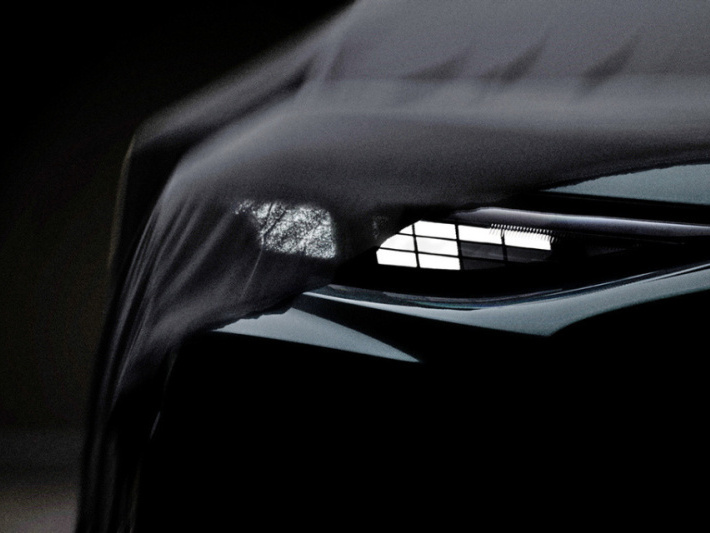
Beyond Expectations: All-New Audi Q3 Coming June 16
RobertJun 13, 2025
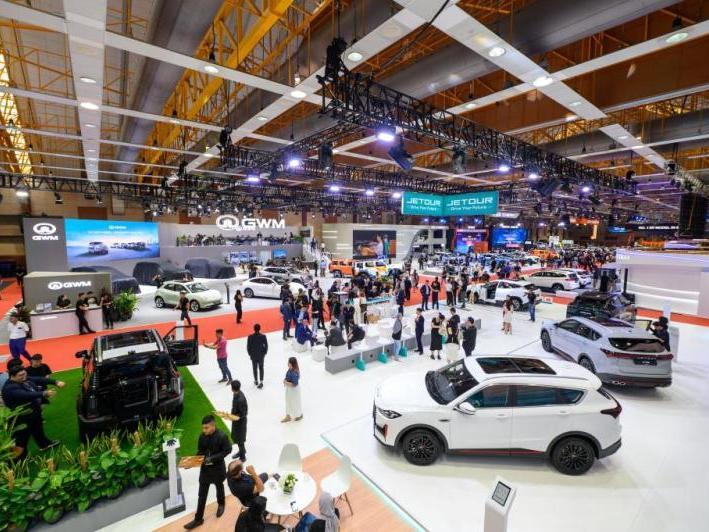
Summarizing the 2025 Malaysia Auto Show, a large number of new cars were launched in Malaysia this year.
MichaelMay 12, 2025
View More

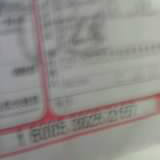
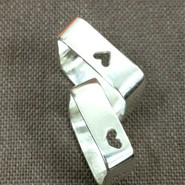






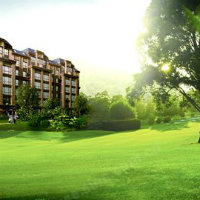


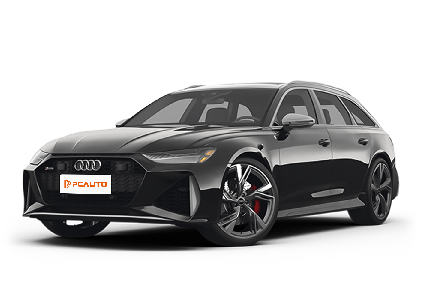





Pros
Cons